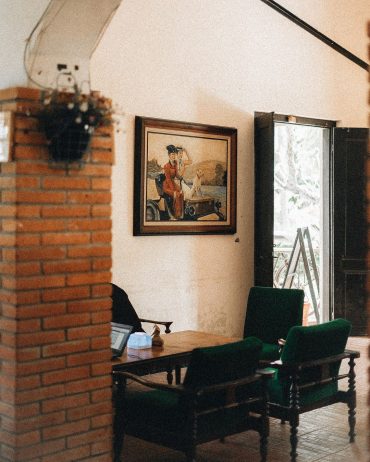Imagine yourself stepping back in time. In the middle of a vast expanse of green rice fields, stand the remains of a sturdy brick building.
The breeze carries whispers of the glorious story of the Kadiri Kingdom, one of the largest Hindu-Buddhist kingdoms in East Java in the 11th to 13th centuries.
That place is the Besole Site, a gateway that takes you on a historical adventure.
Administratively, Besole Site is located in Dukuh Besole, Darungan Village, Kademangan District, Blitar Regency.
The site is located about 8 km from Blitar city and can be reached via the Blitar - Kademangan highway.
The naming of the Besole Site is based on the name of the place where the site was found, namely in Dukuh Besole which was discovered on 15 April 2006 by Mr Sayuti who is a local resident.
The process of its discovery occurred when he was digging the soil for a fish pond in his garden. At a depth of about 1.5 metres, he found a large brick (ancient brick).
Due to his ignorance, the excavation of this fish pond continued, and some of the brick structures were even lifted to the surface.
After several days of excavation by Mr Sayuti, the brick structure continued to expand and temple stone blocks were also found.
Feeling odd about the finding, he then reported it to local village officials and forwarded it to the Blitar District Public Information and Tourism Office.
After conducting a review of the discovery site, the Public Information and Tourism Office of Blitar District reported the find to the Trowulan Antiquities Preservation Centre of East Java Province Working Area (BP3 Jatim).
On 10 May 2006, officers from BP3 East Java conducted a review of the discovery site.
The structure that has been revealed by the discoverer measures 5.8m x 5.8m with a height of 1.6m, is rectangular in plan with a viewer on the north and south sides, and on the west side there are steps leading up.
The top surface of the find was about 180cm above the surrounding ground. The review revealed that some parts of the structure were still buried.
Sebagai langkah awal dalam upaya pelestarian terhadap Situs Besole, BP3 Jatim pada tanggal 23 – 29 November 2006 melakukan ekskavasi penyelamatan tahap I.
The salvage excavation was able to uncover most of the findings of the brick structure, giving a more complete picture of its form.
During the second phase of the rescue excavation, in addition to revealing most of the brick structure of the gate, it was also possible to reveal a brick structure that was thought to be a fence leading northwards slightly to the northeast.
In addition, plain, unadorned temple stone blocks were also found at the top of each flight of stairs.
The stone blocks of the temple have been lifted to the surface by the discoverer.
The chronology of the Besole Site is thought to be related to the existence of the Besole inscription dated 1051 C (1129 AD) or 1054 C (1132 AD), issued by King Bameswara of the Kadiri Kingdom.
Therefore, the buildings at the Besole Site are thought to have existed since the time of the Kadiri Kingdom, specifically the time of King Bameswara.
This discovery is an initial explanation of the existence of the Besole Site as additional data in the interpretation of the history of the nation's civilisation.
The slopes of Mount Kelud during the time of the Kediri Kingdom played an important role in various aspects of people's lives.
Its existence provides many benefits to the kingdom, one of which is the agriculture and plantation sector.
The tropical forests on the slopes of Kelud produce timber for various purposes, such as house building, boat building and fuel.
The forest also produced valuable spices such as cloves, nutmeg and cinnamon which became important trading commodities for the Kediri Kingdom at that time.
Lereng Gunung Kelud, yang dulunya menjadi penunjang penting bagi Kerajaan Kediri, kini menjelma menjadi lanskap perkebunan coffee yang memukau.
Perkebunan Karanganjar, dikelola oleh PT. Harta Mulia, memanfaatkan kesuburan tanah vulkanik dan iklim yang sejuk untuk menghasilkan coffee berkualitas tinggi.
Di balik hamparan hijau pohon coffee, tersimpan jejak sejarah yang kaya.
This combination of history and natural beauty makes the slopes of Mount Kelud a unique and educational tourist destination.










 Home
Home
 IG
IG
 TikTok
TikTok
 Shopee
Shopee
 Chat
Chat